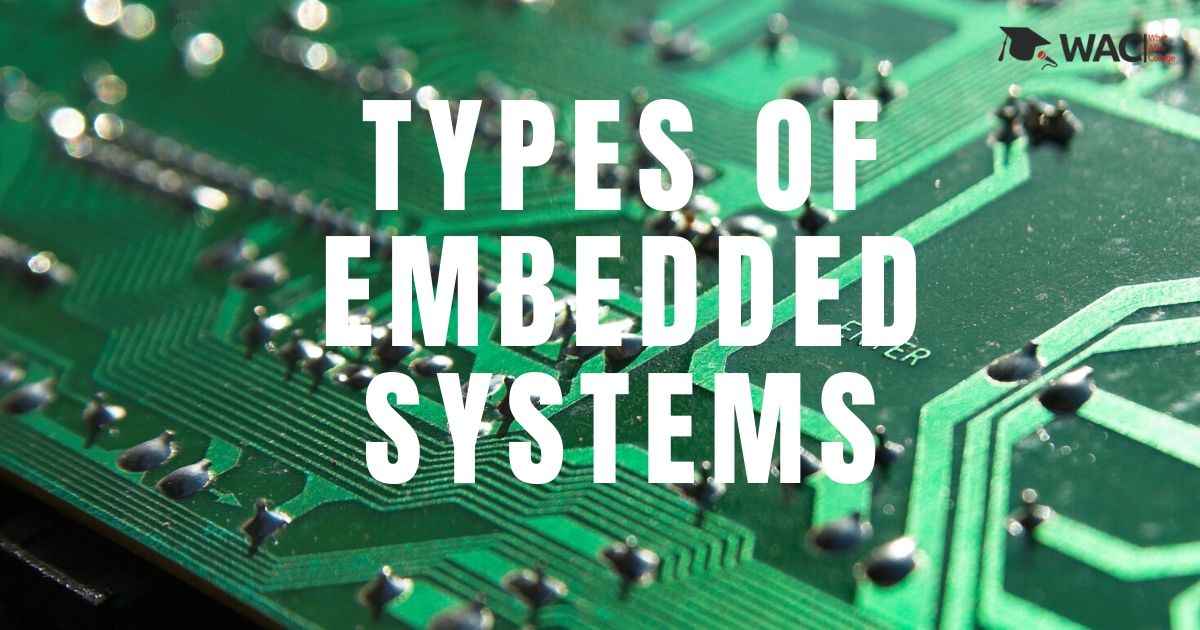No one can deny that embedded systems have become an integral part of our daily lives. Due to extensive research and innovation in this field, they are performing a range of diverse tasks nowadays. This has led to the birth of different types of embedded systems based on their usage, performance, requirements, and micro-controllers. However, to keep things simple, it is generally agreed that embedded systems need to be classified under two main categories, that are based on performance and microcontrollers. Let us look at them in detail.
Based On Performance and Requirements
Real-Time Embedded Systems
The type of embedded systems that gives a rapid response to situations is denoted as real-time embedded systems. Since a quick response to inputs is paramount in the functioning of these embedded systems, special attention is given to their architecture, debugging, and time analysis. Devices with real-time embedded systems are used in high-pressure environments like hospitals and the military.
Standalone Embedded Systems
One of the oldest types of embedded systems is standalone ones. They require no additional computing powers to access and process the data. Furthermore, they can acquire data in the form of analog or digital signals and further oversee them, to provide the output. Usually, the output is cast onto a screen for ease of viewing. Additionally, they can also transfer data to a connected device. Examples include digital cameras, music players, ovens, etc.
Networked Embedded Systems
These types of embedded systems are a complete mirror image of standalone types. We say that because networked embedded systems can’t function without being connected to a computing device. Interfaces like WAN and LAN are mandatory to transform the data acquired into tangible outputs. The popularity of these embedded systems is sky-rocketing due to the fact that hardware requirements are among the lowest. A common example of these is office security systems.
Mobile Embedded Systems
Mobile embedded systems are again a booming technology that is still in its infancy stage. However, that does not imply it has had less impact than others. In fact, there are high probabilities that you are currently reading this on a smartphone, which utilizes a mobile embedded system. Nevertheless, we have to mention that their memory capacity is not stellar and hence, cannot be used on an industrial scale. Other than smartphones, examples include personal assistants, cameras, and the likes.
Based On Microcontroller Size
Small Scale Embedded Systems
When tasks that require less processing power need to be done, small scale embedded systems are used. However, these types of embedded systems have now become redundant. With just 8 or 16 bits, not many tasks can be done in the modern age. Hence, they are employed more for control rather than computational tasks. They are not power-hungry and can be activated through batteries. If you want to design them, however, you would require an IDE, assembler, cross-assembler and an editor
Medium Scale Embedded Systems
A more modern embedded system that can be used for complex tasks, is the medium scale embedded system. In addition to basic hardware of 16-32 bit microprocessor, an external ROM and RAM are required. Also, the software and hardware need to be integrated to give excellent user experience as One cannot co-exist without the other. Expert knowledge of a programming language along with debugger, simulator, IDE, pipes, sockets, and a host of other components are required to design them.
Sophisticated Embedded Systems
Among the most complex types of embedded systems is the one having a 32-64 bit microcontroller. When the amount of incoming data is huge and work needs to be done on an industrial scale, sophisticated embedded systems are employed. Both hardware and software are designed simultaneously and high-level expertise is a pre-requirement.
Bonus Information
With the passage of time, embedded systems are getting more complex, leading to the addition of different types. Some are becoming redundant while others are gaining traction. Here is a bonus tip for anyone who wants to foray into the field of embedded systems. Try to learn complex coding languages like Python and get yourself acquainted with the corresponding hardware. Also, try looking for opportunities in networked and mobile embedded systems and work with 32 or 64-bit hardware.

All you need to know about Robotics and Embedded System
Learn Robotics & Embedded Systems
Learn Robotics & Embedded System with WAC
Other Skills in Demand(H3)
| Artificial Intelligence | Data Science |
| Digital Marketing | Business Analytics |
| Big Data | Internet of Things |
| Python Programming | Robotics & Embedded System |
| Android App Development | Machine Learning |

